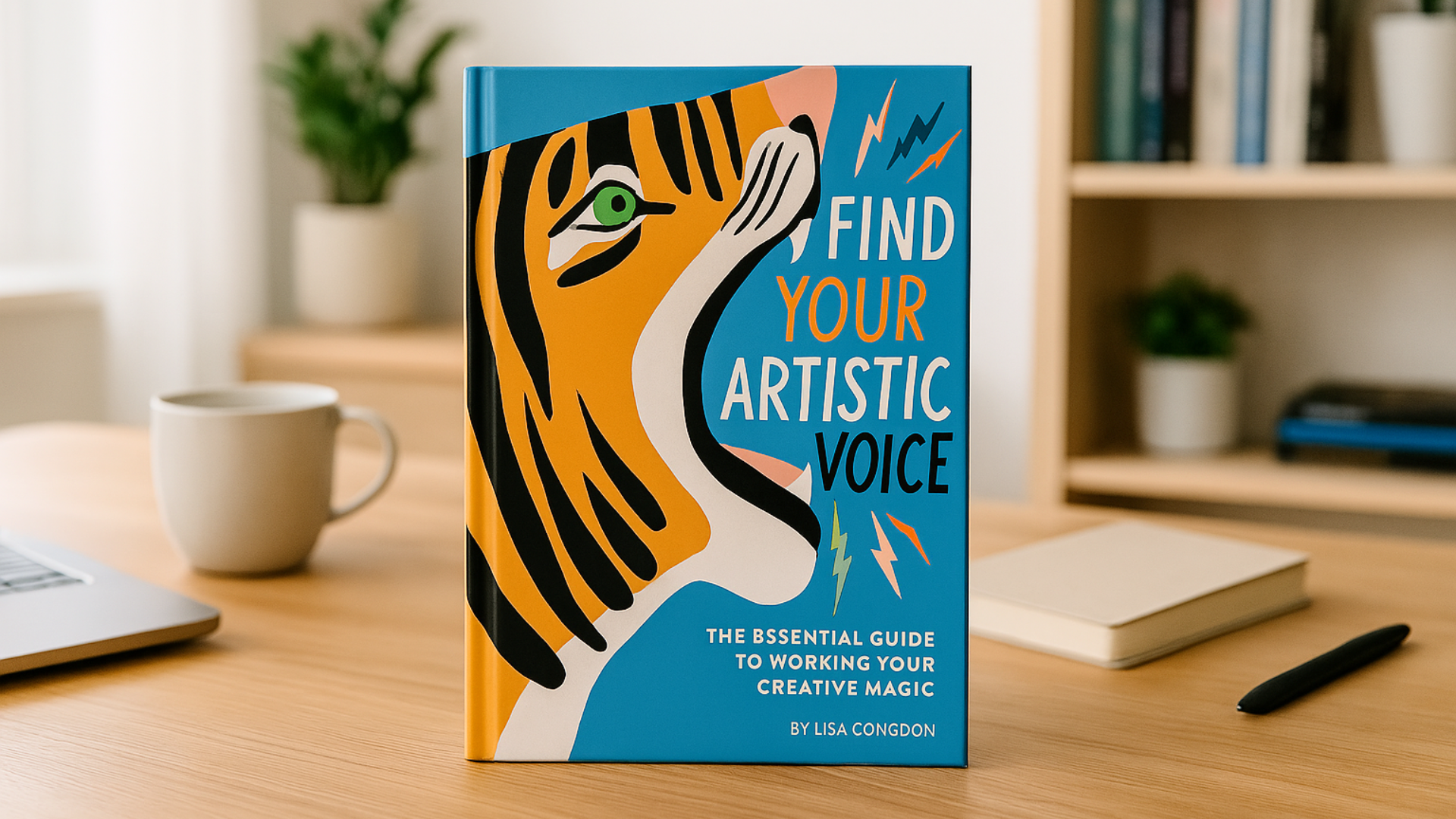What It Really Means to Find Your Voice in Art

Book Review: Find Your Artistic Voice by Lisa Congdon
A gentle, practical companion for artists seeking clarity in their creative path
There’s something deeply reassuring about being reminded that artistic style is not a fixed identity but an evolving conversation. In Find Your Artistic Voice, Lisa Congdon offers support to artists who feel stuck or uncertain, and encourages them to keep going with sincerity, curiosity, and courage. This is not a book about polishing your personal brand or standing out in the market. It’s a thoughtful, grounded guide for returning to the heart of your creative practice.
Congdon meets the reader where they are, especially those in a mid-career pause or creative reset. She doesn’t assume you’re starting from scratch, but she also doesn’t expect you to have it all figured out. Her voice is steady and honest, offering a sense of companionship rather than expertise.
What the book promises
The book promises to help artists of all levels understand and articulate their creative voice. Congdon defines artistic voice as the sum of your style, influences, subject matter, and point of view. She makes it clear that voice is not something you find once and keep forever. It’s something you develop, question, and return to again and again.
Rather than offering a rigid path, the book encourages exploration. Congdon blends her own experience with the stories of other working artists, providing both guidance and reassurance. The goal is not perfection or mastery. It is authenticity.
What the book delivers
Congdon delivers a generous and accessible guide to creative self-discovery. She writes about the emotional and practical aspects of the artist’s journey with clarity and care. Topics include comparison, consistency, fear of judgement, and the pressure to find success quickly. Each chapter explores one aspect of the creative process and ends with suggestions that feel more like invitations than assignments.
What sets this book apart is its balance. It neither over-simplifies the search for artistic identity nor complicates it with theory. Congdon writes as someone who understands the messiness of creative work, and who values process over product. She is particularly strong in naming the internal roadblocks many artists face but struggle to articulate.
The inclusion of interviews with other artists brings in a welcome variety of perspectives. These stories remind the reader that there is no single way to find your voice, and that it’s normal for voice to evolve as your life and art change.
Style and structure
Congdon’s tone is conversational and calm. She avoids jargon and keeps the material approachable without dumbing it down. Her writing feels intentional and friendly, like a good mentor who is willing to share what she’s learned without claiming to have all the answers.
The book is well-structured and visually engaging. Each chapter builds on the last while standing on its own. Headings, artist interviews, and clean layouts help readers stay oriented. This is a book you can read straight through or pick up in smaller segments, depending on what you need in the moment.
The visuals are thoughtfully integrated. Congdon is a visual artist herself, and the design of the book reflects that. It is colourful, clean, and well-paced.
Light limitations
Some readers may find the book assumes access to time, materials, or community that not all artists have. While Congdon acknowledges that creative life comes with constraints, the examples and exercises may feel more accessible to those with some established habits or support systems.
A few of the interviews, while inspiring, lean more toward affirmation than instruction. Readers looking for deeper technical insight or highly structured exercises may find the book more philosophical than practical at times. Still, its core purpose is reflection, not technique, and it succeeds on that front.
Another limitation is that many of the artists featured are already publicly successful. Readers who are earlier in their creative lives might wish for more stories from people in the early or unseen stages of artistic development.
Final thoughts
Find Your Artistic Voice is a steady and encouraging resource for creatives in search of clarity. Lisa Congdon understands that artistic voice is not something you earn. It is something you return to, shape, and protect. Her writing offers comfort without complacency and encourages the reader to trust their instincts and make space for experimentation.
This book is well suited for artists who are re-evaluating their direction, feeling creatively uncertain, or simply in need of a gentle reminder that their voice matters. Congdon does not offer a formula. She offers a practice. And in doing so, she gives artists a quiet kind of permission. To be honest, to be uncertain, and to keep creating anyway.
Highly recommended for artists and creative professionals who are seeking clarity, confidence, or a renewed connection with their work through a thoughtful and authentic exploration of their artistic voice.